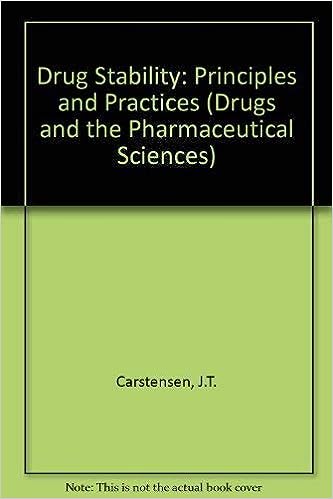Understanding ASEAN Stability Studies for New Drug Substances
Introduction
Stability studies are a fundamental part of pharmaceutical development, ensuring that drug substances maintain their quality, safety, and efficacy throughout their lifecycle. The ASEAN guidelines for stability testing provide a harmonized framework tailored to the region’s tropical climate, addressing the unique challenges faced by manufacturers in Southeast Asia. This article offers practical insights into ASEAN stability studies for new drug substances, focusing on key requirements, challenges, and strategies for successful implementation.
Overview of ASEAN Stability Guidelines
The ASEAN guidelines are based on the ICH Q1A(R2) framework but
- Ensuring Quality: Stability studies confirm that drug substances retain their intended properties under recommended storage conditions.
- Supporting Regulatory Compliance: Data from stability studies are required for product registration in ASEAN member states.
- Addressing Regional Needs: Tailored guidelines account for the hot and humid climate of Southeast Asia.
Key Requirements for ASEAN Stability Studies
1. Long-Term Testing Conditions
Long-term stability studies for ASEAN markets must simulate Zone IVb conditions:
- Storage Temperature: 30°C ± 2°C.
- Relative Humidity: 75% RH ± 5% RH.
- Duration: At least 12 months, with data collection at regular intervals (e.g., 0, 3, 6, 9, and 12 months).
Tip: Include real-time data to provide robust support for shelf-life claims.
2. Accelerated Stability Testing
Accelerated testing provides insights into the stability of drug substances over a shorter period:
- Conditions: 40°C ± 2°C / 75% RH ± 5% RH.
- Duration: Minimum of six months, with sampling at 0, 1, 2, 3, and 6 months.
Tip: Use accelerated testing to identify degradation pathways and establish preliminary shelf life.
3. Testing Parameters
ASEAN guidelines require monitoring of critical quality attributes (CQAs) during stability studies:
- Chemical Stability: Assay, impurities, and degradation products.
- Physical Stability: Appearance, solubility, and moisture content.
- Microbiological Stability: Sterility and preservative efficacy.
Tip: Validate analytical methods to ensure accuracy and consistency in monitoring CQAs.
4. Packaging Considerations
The container-closure system plays a critical role in maintaining the stability of drug substances. ASEAN guidelines emphasize:
- Testing packaging materials for compatibility and moisture protection.
- Using opaque or UV-resistant packaging for light-sensitive substances.
Tip: Conduct packaging studies alongside stability testing to validate effectiveness under ASEAN conditions.
Challenges in ASEAN Stability Studies
Implementing stability studies for ASEAN markets can present unique challenges:
- Climatic Variability: High temperature and humidity accelerate degradation, requiring robust formulations and packaging.
- Resource Constraints: Smaller manufacturers may lack access to validated stability chambers and advanced testing facilities.
- Regulatory Variability: Minor differences in implementation across ASEAN member states may complicate compliance.
Tip: Partner with local contract research organizations (CROs) to overcome resource and expertise limitations.
Best Practices for ASEAN Stability Studies
To ensure successful compliance with ASEAN guidelines, manufacturers should adopt these best practices:
- Plan Early: Integrate stability studies into the early stages of drug substance development to avoid delays in registration.
- Customize Protocols: Tailor stability protocols to meet ASEAN-specific requirements while aligning with global standards.
- Validate Methods: Use validated analytical methods for accurate and reproducible results.
- Optimize Packaging: Select materials that provide maximum protection against moisture and light.
- Engage with Regulators: Collaborate with ASEAN regulatory authorities to clarify requirements and resolve ambiguities early.
Emerging Trends in ASEAN Stability Studies
Advancements in science and technology are transforming stability testing practices in the ASEAN region. Key trends include:
- Predictive Modeling: AI-driven tools analyze stability data to forecast long-term trends, reducing reliance on extended real-time studies.
- Digital Transformation: Cloud-based platforms streamline data collection, analysis, and regulatory submissions.
- Sustainability: Growing focus on eco-friendly packaging materials and energy-efficient stability chambers.
Tip: Stay informed about technological advancements to enhance efficiency and compliance in stability testing.
Impact of ASEAN Stability Guidelines on Drug Development
The ASEAN stability guidelines significantly influence pharmaceutical development in the region:
- Enhanced Product Quality: Rigorous testing ensures drug substances remain effective and safe under challenging conditions.
- Streamlined Approvals: Harmonized guidelines facilitate regulatory submissions and accelerate market entry.
- Market Growth: Clear requirements encourage investment in the ASEAN pharmaceutical market, supporting innovation and expansion.
Conclusion
ASEAN stability guidelines for new drug substances provide a robust framework for ensuring product quality in the region’s hot and humid climate. By adhering to these requirements, manufacturers can achieve regulatory compliance, deliver safe and effective products, and gain access to the dynamic ASEAN pharmaceutical market. With advancements in technology and a focus on sustainability, the future of stability testing in Southeast Asia holds exciting opportunities for innovation and growth.

